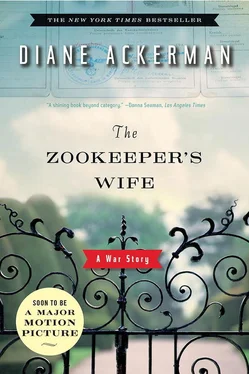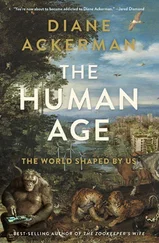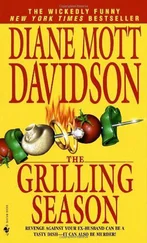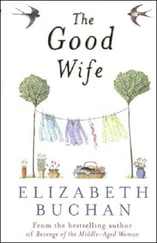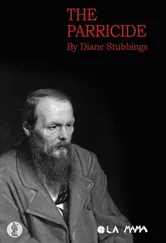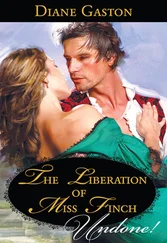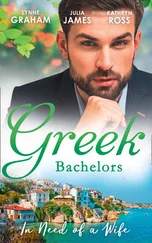Grynberg, Words to Outlive Us , pp. 46–47.
After Karski, p. 267, quoted in Davies, Rising ’44 , p. 185.
The president of Warsaw is equivalent to the mayor of a city.
See Rostal, “In the Cage of the Pheasant.”
Milton Cross, Encyclopedia of the Great Composers and Their Music , Doubleday, 1962, pp. 560–61.
Workers deported to Germany by the Arbeitsamt had to wear a purple P on their sleeve, and were denied church, cultural pursuits, and public transportation. Sex with a German was punishable by death. (Davies, Rising ’44 , p. 106)
Polacy z pomocą Żydom ( Poles Helping Poles ), 2nd edition (Kraków: Wydawnictwo Znak, 1969), pp. 39–45.
Philip Boehm, introduction to Grynberg, Words to Outlive Us , p. 3.
Jack Klajman with Ed Klajman, Out of the Ghetto (London: Vallentine Mitchell, 2000), pp. 21, 22.
Lonia Tenenbaum, in Polacy z pomocą Żydom ( Poles Helping Poles ).
Jan E. Rostal, “In the Cage of the Pheasant,” Nowiny i Courier , October 1, 1965.
Karl Friederichs quoted in Deichmann, Biologists Under Hitler , p. 160.
Friedrich Prinzing, Epidemics Resulting from Wars (Oxford: Clarendon Press, 1916).
speech to SS officers, April 24, 1943, Kharkov, Ukraine; reprinted in United States Office of Chief of Counsel for the Prosecution of Axis Criminality, Nazi Conspiracy and Aggression, (Washington, D.C.: United States Government Printing Office, 1946), vol. 4, pp. 572–78, 574.
report by Ludwig Fischer quoted in Gutman, Resistance, p. 89.
Hannah Krall, Shielding the Flame: An Intimate Conversation with Dr. Marek Edelman, the Last Surviving Leader of the Warsaw Ghetto Uprising (New York: Henry Holt, 1977), p. 15.
Stefan Ernest quoted in Grynberg, Words to Outlive Us , p. 45.
Alexander Susskind, quoted in Daniel C. Matt, ed., The Essential Kabbalah: The Heart of Jewish Mysticism (San Francisco: HarperCollins, 1995; translated from Dov Baer, Maggid Devarav l’Ya’aquov), p. 71.
Nehemia Polen, The Holy Fire: The Teachings of Rabbi Kalonymus Kalman Shapira, the Rebbe of the Warsaw Ghetto (Lanham, Md.: Rowman & Littlefield, 1994), p. 163.
Marek Edelman in Krall, Shielding the Flame . After the war Edelman became a cardiologist, commenting that “when one knows death so well, one has more responsibility for life.”
Postwar interview by Danka Harnish, in Israel, translated from Hebrew by Haviva Lapkin of the Lorraine and Jack N. Friedman Commission for Jewish Education, West Palm Beach, Florida, April 2006.
Gunnar S. Paulsson, Secret City: The Hidden Jews of Warsaw , 1940–1945 (New Haven, Conn.: Yale University Press, 2002), p. 5.
Alicja Kaczyńska, Obok piekła (Gdansk: Marpress, 1993), p. 48; quoted in Paulsson, Secret City, pp. 109–10.
from Ruta Sakowska, ed., Listy o Zagladzie ( Letters About Extermination ) (Warsaw: PWN, 1997). Jenny Robertson, Don’t Go to Uncle’s Wedding: Voices from the Warsaw Ghetto (London: Azure, 2000).
Janusz Korczak, Ghetto Diary (New Haven, Conn.: Yale University Press, 2003), p. x.
Ghetto Diary , p. 9.
Ghetto Diary , p. 8.
Ghetto Diary , p.107.
Betty Jean Lifton, introduction to Ghetto Diary , p. vii.
Irene Tomaszewski and Tecia Werbowski, Zegota: The Rescue of Jews in Wartime Poland (Montreal, Canada: Price-Patterson Ltd., 1994).
From Gunnar S. Paulsson, Secret City: The Hidden Jews of Warsaw 1940–1945 (New Haven: Yale University Press, 2002), p. 163.
Jan Żabiński, “The Growth of Blackbeetles and of Cockroaches on Artificial and on Incomplete Diets,” Journal of Experimental Biology (Company of Biologists, Cambridge, UK), vol. 6(1929): pp. 360–86.
Emanuel Ringelblum, Polish-Jewish Relations During the Second World War (New York: Howard Festig, 1976), pp. 89–91.
Michael Wex, Born to Kvetch: Yiddish Language and Culture in All of Its Moods (New York: St. Martin’s Press, 2005), p. 93.
Wex, Born to Kvetch, pp. 117, 132, 137.
Judit Ringelblum, Beit Lohamei ha-Getaot (Haifa, Israel: Berman Archives); quoted in Paulsson, Secret City , p. 121.
Otto Strasser, Mein Kampf (Frankfurt am Main: Heinrich Heine Verlag, 1969), p. 35.
Cywia Lubetkin, Extermination and Uprising (Warsaw: Jewish Historical Institute, 1999); quoted in Robertson, Don’t Go to Uncle’s Wedding, p. 93.
Stefan Korbónski, Fighting Warsaw: The Story of the Polish Underground State, 1939–1945 (New York: Hippocrene Books, 2004), p. 261.
From the account of Władysław Smólski in Righteous Among Nations: How Poles Helped the Jews, 1939–1945 , edited by Władysław Barloszewski and Zofia Lewin (London: Earlscourt Publications Ltd., 1969), pp. 255–59.
Schultheiss, Dirk, M.D., et al., “Uncircumcision: A Historical Review of Preputial Restoration,” Plastic and Reconstructive Surgery , vol. 101, no. 7 (June 1998): pp. 1990–98.
A personal reminiscence deposited with the Jewish Historical Institute after World War II, and published in Righteous Among Nations, p. 258.
Goodrick-Clark, The Occult Roots of Nazism , p. 161.
Ringelblum, Polish-Jewish Relations , p. 101.
Sophie Hodorowicz Knab, Polish Customs, Traditions, and Folklore (New York: Hippocrene Books, 1996), p. 259.
Janina in Righteous Among Nations , p. 502.
Rachela “Aniela” Auerbach, postwar testimony in Righteous Among Nations , p. 491.
Basia in Righteous Among Nations , p. 498.
May 2, 1963.
Arthur Schopenhauer, Parerga and Paralipomena , trans. E. F. J. Payne (New York: Oxford University Press, 2000), vo1. 1, p. 466 (chap. 5, “Counsels and Maxims”).
In the ensuing firestorm, counting victims became impossible, though it’s now estimated that 35,000 people perished in Dresden. The rare manuscripts of eighteenth-century Italian composer Tomaso Albinoni, whose Adagio in G Minor has become synonymous with mournfulness, also vanished in flames.
Читать дальше
